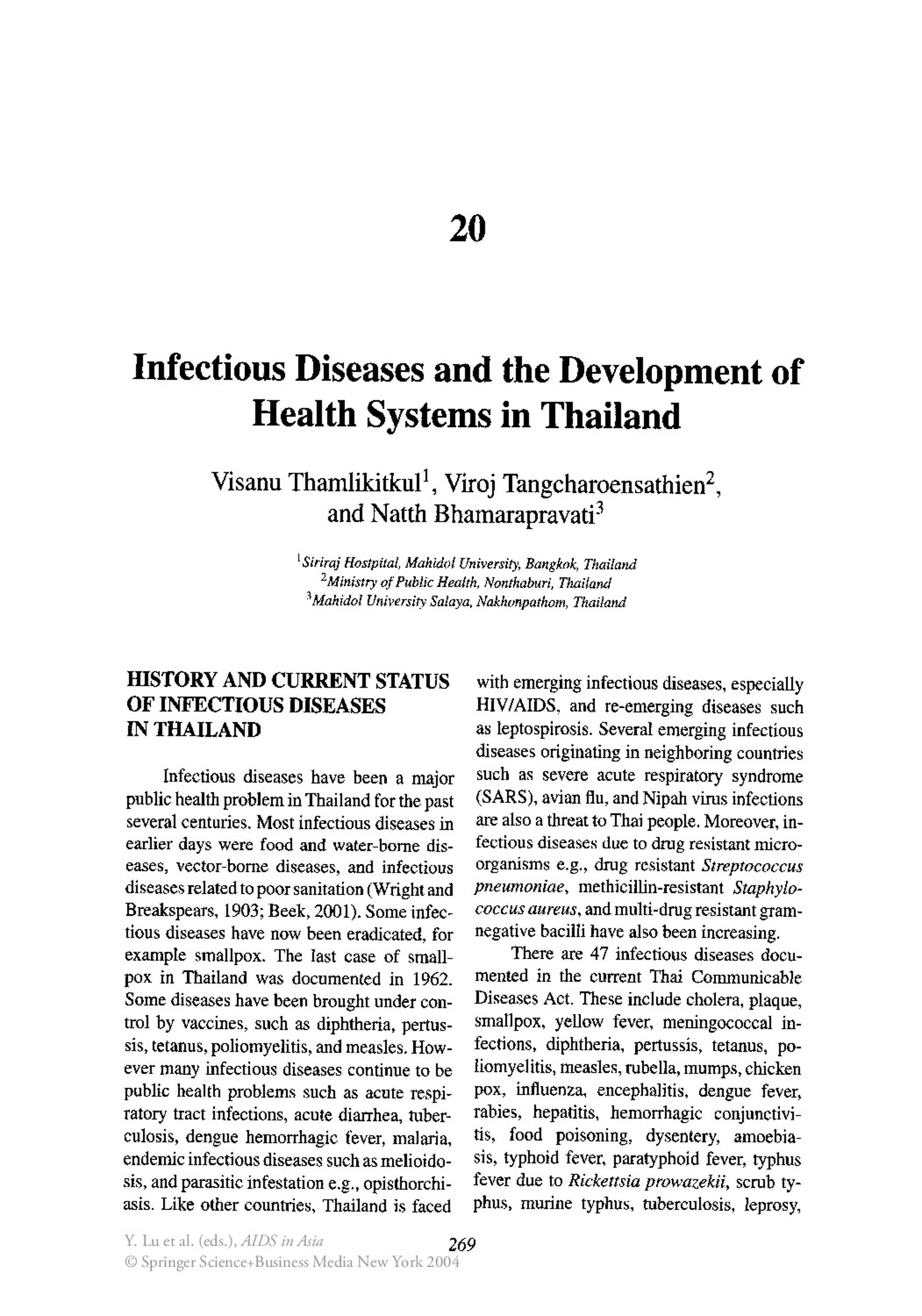Infectious diseases and the development of heatlh systems in Thailand.

Infectious diseases have been a major public health problem in Thailand for the past several centuries. Most infectious diseases in earlier days were food and water-borne diseases, vector-borne diseases, and infectious diseases related to poor sanitation (Wright and Breakspears, 1903; Beek, 2001). Some infectious diseases have now been eradicated, for example smallpox. The last case of smallpox in Thailand was documented in 1962. Some diseases have been brought under control by vaccines, such as diphtheria, pertussis, tetanus, poliomyelitis, and measles. However many infectious diseases continue to be public health problems such as acute respiratory tract infections, acute diarrhea, tuberculosis, dengue hemorrhagic fever, malaria, endemic infectious diseases such as melioidosis, and parasitic infestation e.g., opisthorchiasis. Like other countries, Thailand is faced with emerging infectious diseases, especially HIV/AIDS, and re-emerging diseases such as leptospirosis. Several emerging infectious diseases originating in neighboring countries such as severe acute respiratory syndrome (SARS), avian flu, and Nipah virus infections are also a threat to Thai people. Moreover, infectious diseases due to drug resistant microorganisms e.g., drug resistant Streptococcus pneumoniae, methicillin-resistant Staphylococcus aureus, and multi-drug resistant gram-negative bacilli have also been increasing.
